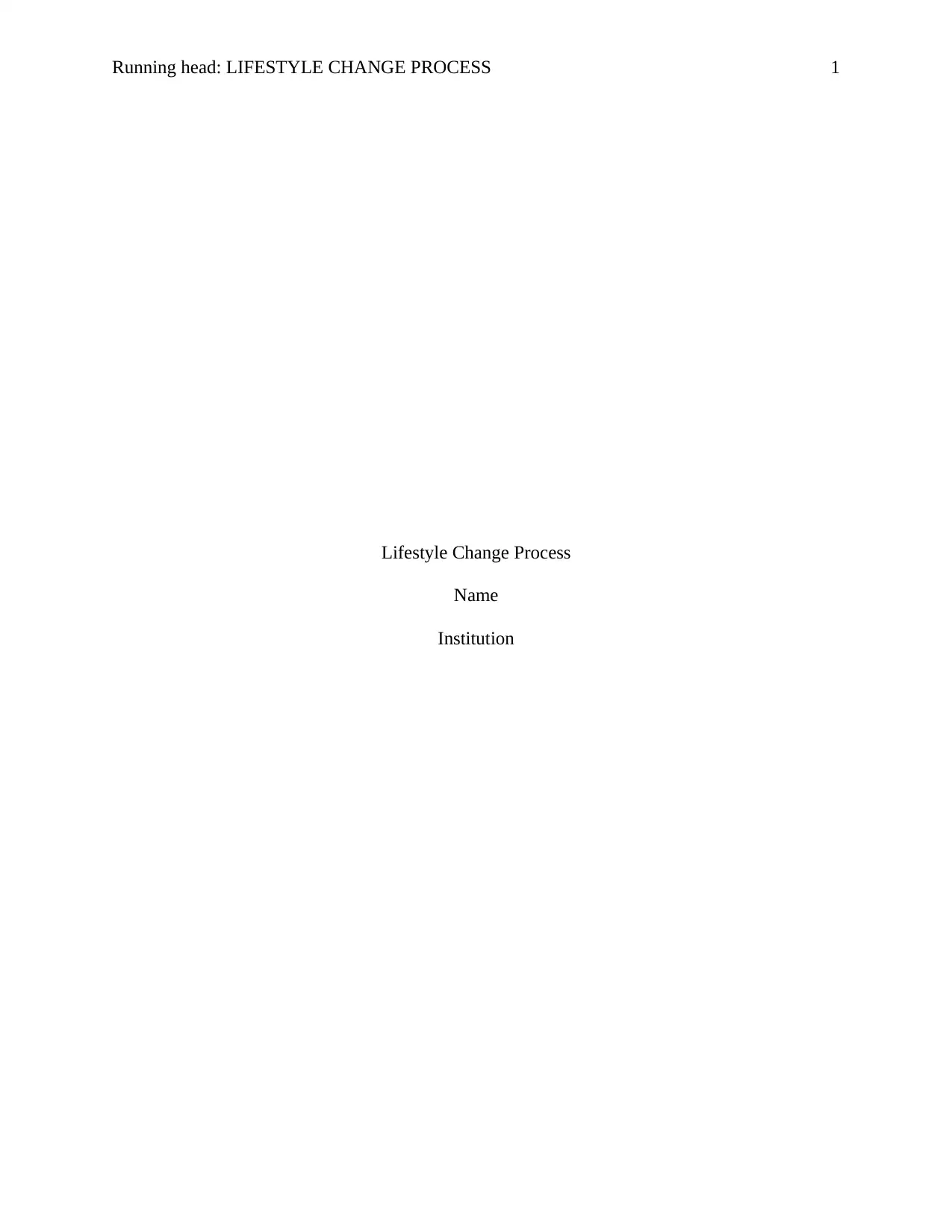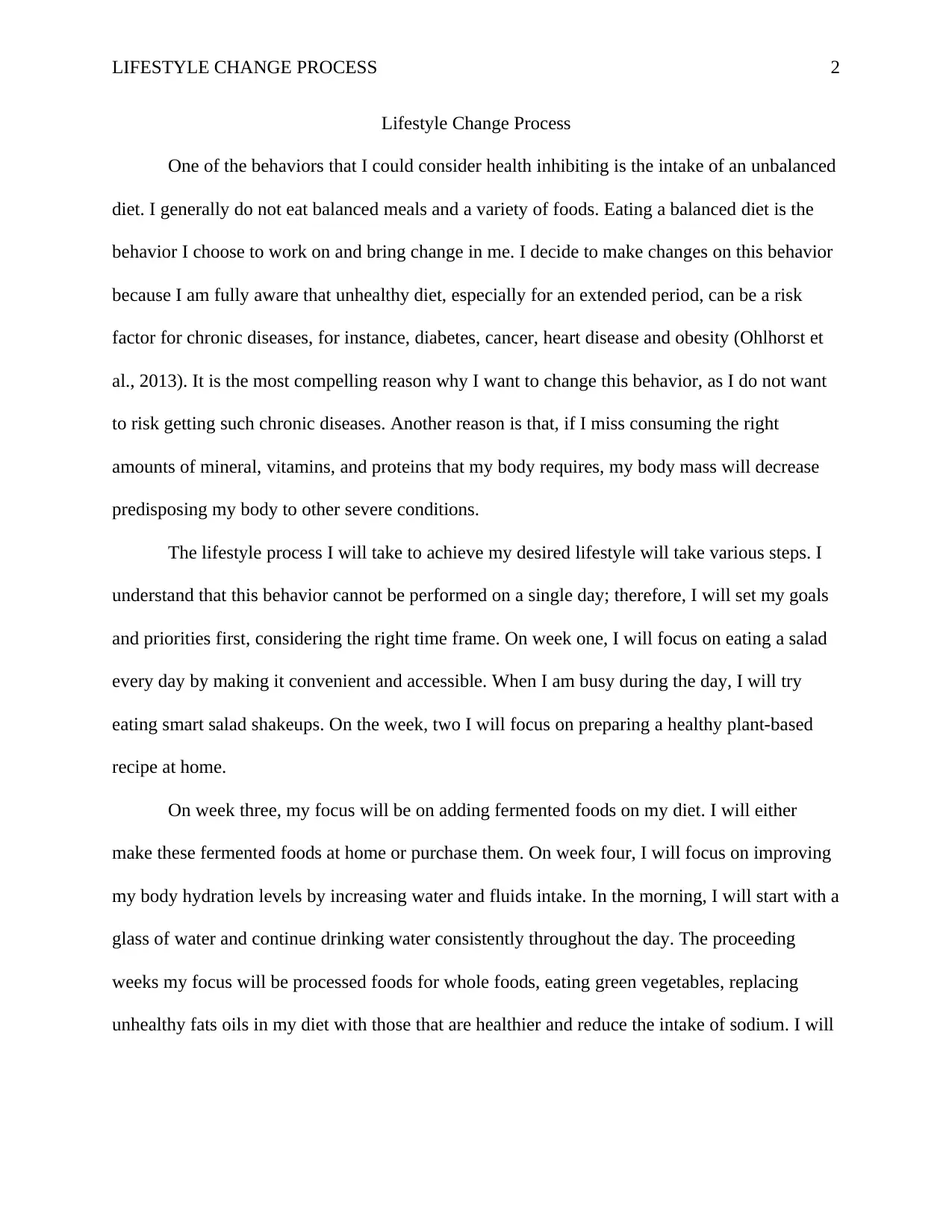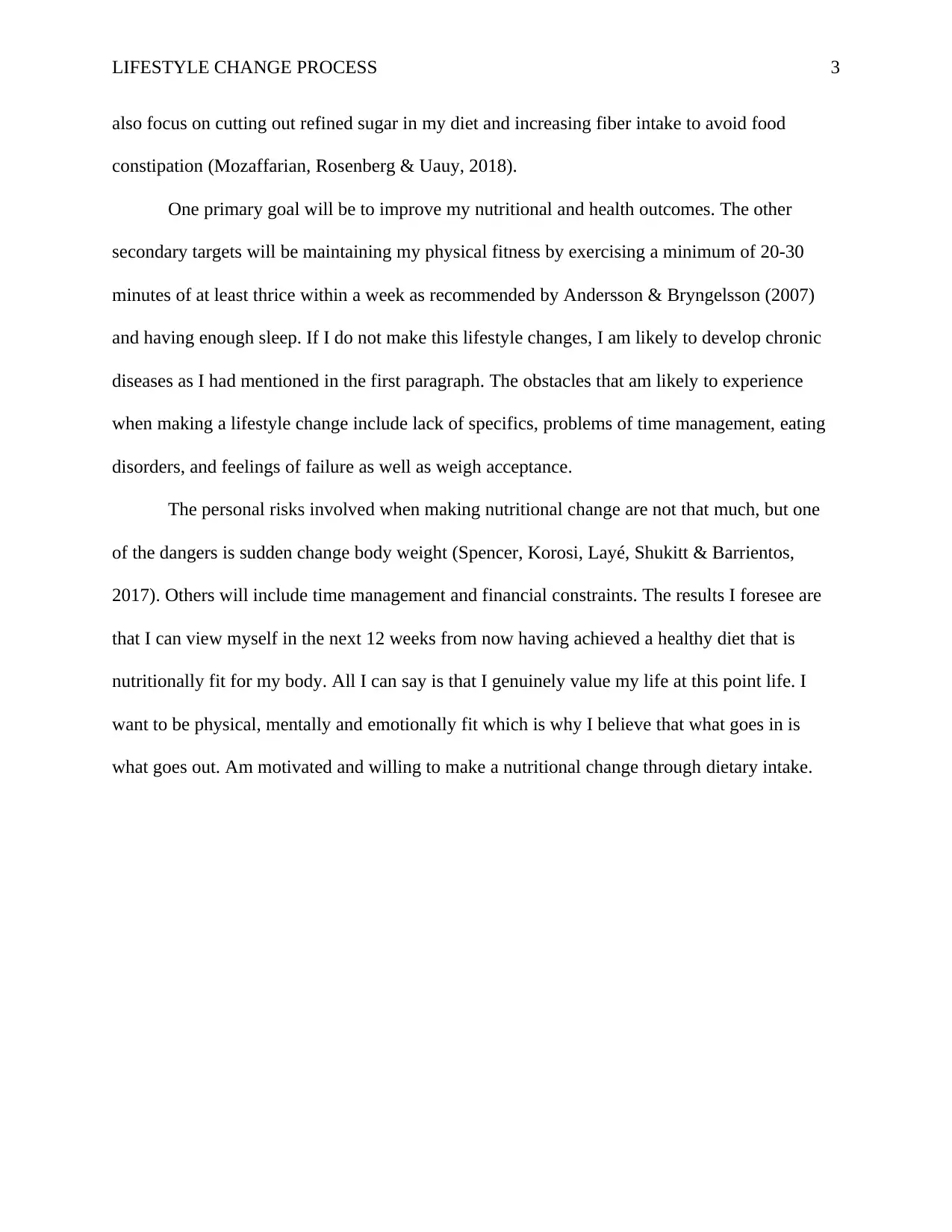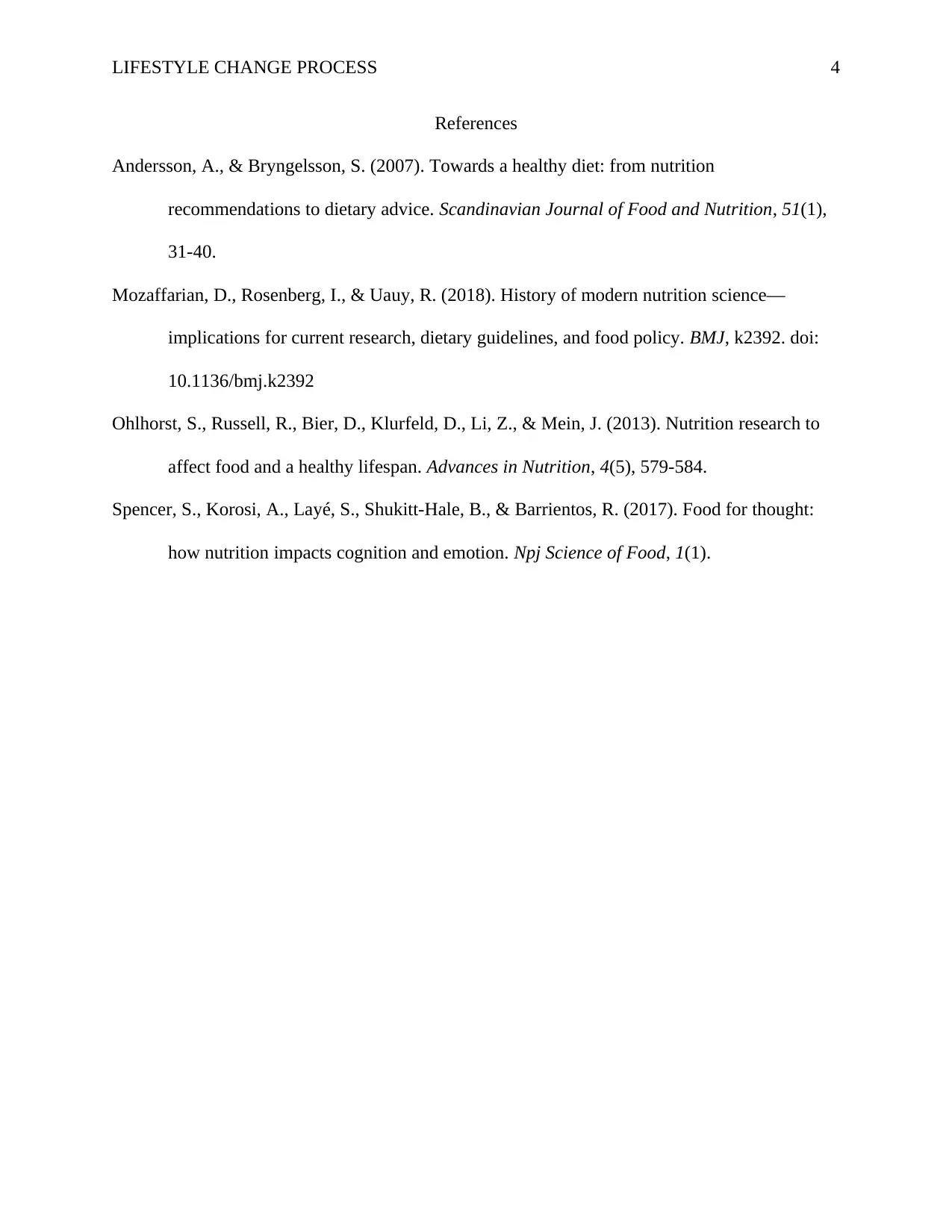Lifestyle Change Process: A Personal Plan for Diet and Well-being
VerifiedAdded on 2023/06/05
|4
|840
|222
Essay
AI Summary
This essay details a personal commitment to changing health-inhibiting dietary habits by adopting a balanced diet. The author outlines a structured, multi-week plan that begins with incorporating daily salads and progresses to preparing plant-based meals, adding fermented foods, improving hydration, and replacing processed foods with whole foods. The plan also includes reducing unhealthy fats and sugar intake, and increasing fiber. The primary goal is to improve nutritional and health outcomes, supplemented by secondary targets of physical fitness through exercise and adequate sleep. Potential obstacles such as time management, eating disorders, and financial constraints are acknowledged, along with the risk of sudden body weight changes. The anticipated result is a healthier diet and improved overall well-being within 12 weeks, driven by a strong personal motivation to achieve physical, mental, and emotional fitness. Desklib provides students access to similar solved assignments and AI based study tools.
1 out of 4











![[object Object]](/_next/static/media/star-bottom.7253800d.svg)